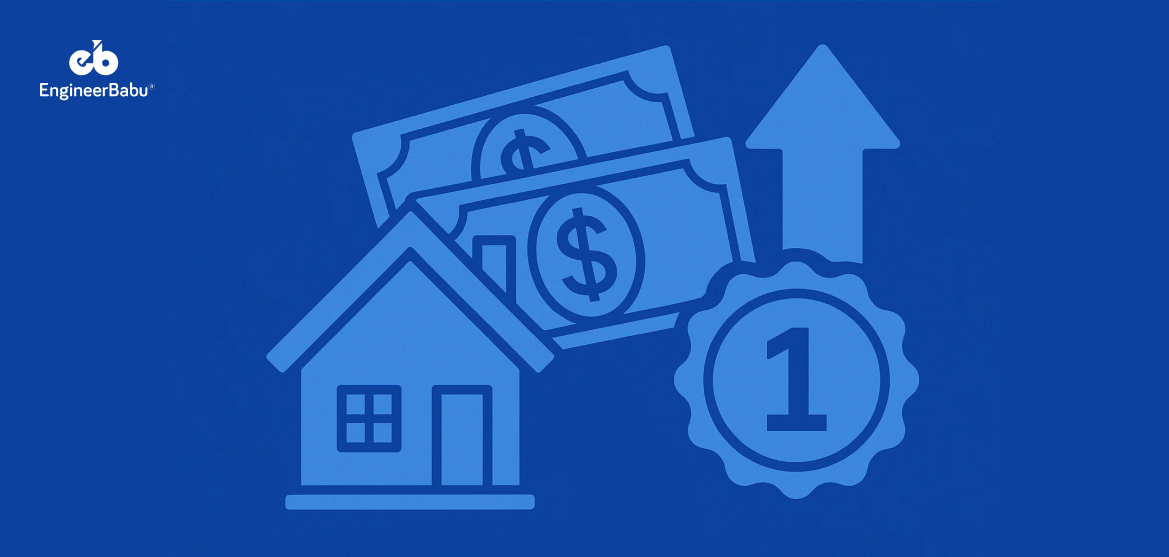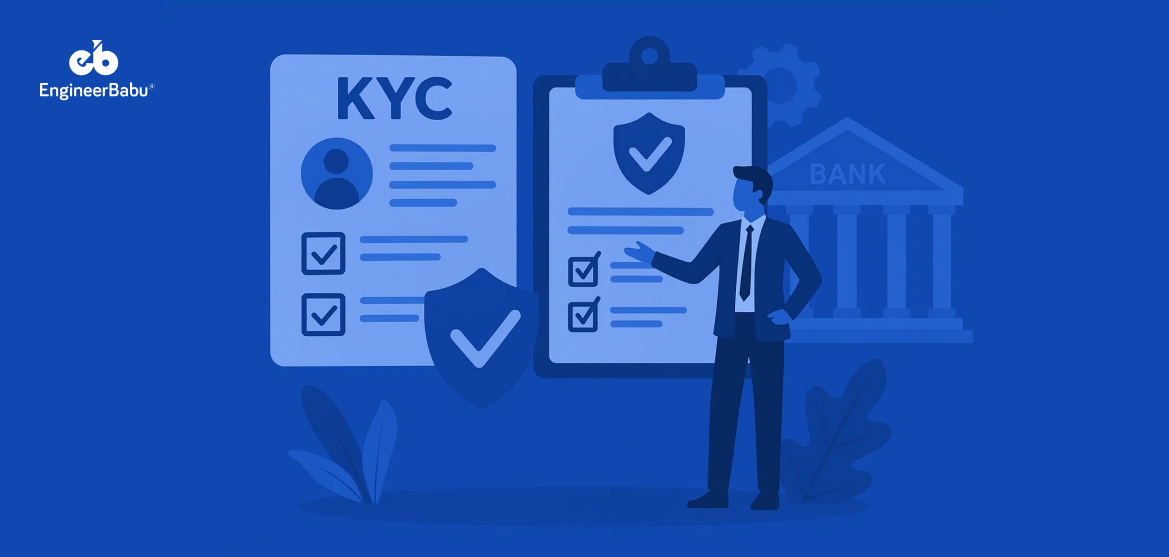A property can have multiple loans attached to it, but only one lender gets the strongest claim if things ever go wrong. That position is called first mortgage priority, and it quietly shapes how lenders assess risk, how borrowers get approved and how disputes are settled during foreclosure.
Most homeowners never think about it, yet the entire mortgage system depends on this single concept. Whether you’re refinancing, taking a top-up loan or planning a second mortgage, understanding who holds the first priority can save you from serious complications later.
In this guide, we’ll break down what first mortgage priority means and why both borrowers and lenders treat it as a critical piece of the lending process.
What is First Mortgage Priority?
First mortgage priority refers to the legal order in which lenders get paid if a property is ever sold to recover outstanding debt. When a borrower takes a mortgage, the lender registers a charge on the property. The lender whose charge is recorded first receives the highest priority. This position matters because it gives the lender the first claim on the sale proceeds if the borrower defaults.
In simple terms, the lender holding first priority gets paid before any other lender or claimant. Every subsequent loan secured against the same property automatically falls into a lower priority, which means a higher risk of not being repaid in full. For banks and NBFCs, this priority status directly influences lending decisions, interest rates and the terms they are willing to offer a borrower.
Why First Mortgage Priority Matters?
1. It Protects the Lender’s Rights During Default
First mortgage priority ensures that the primary lender has the first legal claim over the property if the borrower stops making payments. This matters because recovery through foreclosure can take time, involve legal costs and require coordination with multiple parties. When the lender holds first priority, they don’t need to compete with other creditors to recover their dues. Their position is legally protected, which strengthens their confidence in approving the loan and reduces the overall lending risk.
2. It Directly Influences Loan Approval Decisions
Lenders evaluate risk before approving any mortgage, and first priority plays a major role in that decision. When a lender knows they are the first in line to recover funds, even worst case scenarios become manageable. This allows them to approve loans more easily and with fewer internal objections. Without first priority, a borrower might face stricter eligibility requirements, more paperwork or outright rejection because the lender does not want to operate behind other creditors.
3. It Allows Borrowers to Access Lower Interest Rates
Borrowers often underestimate how much their mortgage structure affects the pricing they receive. A lender with first priority takes on significantly less risk, which translates into more competitive rates for the customer. When lenders feel secure, they do not need to inflate interest rates to offset potential losses. This makes the loan cheaper, improves long-term affordability and reduces the total cost of ownership for the borrower throughout the loan tenure.
4. It Simplifies the Foreclosure and Recovery Process
If foreclosure becomes necessary, first mortgage priority simplifies the entire process. The lender does not need to negotiate with secondary lenders, settle disputes over claim order or wait for other creditors to recover their share. The foreclosure proceeds go directly toward clearing the first lender’s outstanding balance. This clarity speeds up legal processes, reduces administrative disputes and ensures the recovery follows a predictable and well-defined path.
5. It Reduces Legal Disputes Between Creditors
Multiple loans secured against the same property often lead to disagreements about who gets paid first. First mortgage priority removes this uncertainty by clearly defining the hierarchy of claims. With documented priority, courts and creditors have a straightforward guideline to follow. This prevents lengthy legal battles, protects all parties involved and ensures that repayment distribution remains fair and legally compliant. The clearer the priority, the lower the chance of litigation or delays.
6. It Strengthens the Security Value of the Property
A property with a clearly established first mortgage priority is considered more secure from a lender’s perspective. This increases the property’s value as collateral because the lender knows exactly where they stand. It also allows borrowers to negotiate better terms, raise funds more efficiently or structure future loans without confusion. A strong first priority makes the collateral more reliable, predictable and easier to evaluate during underwriting.
7. It Helps Borrowers Avoid Overleveraging Problems
When first priority is established, borrowers get clearer boundaries on how much they can borrow against the property. Secondary lenders typically offer smaller amounts and higher rates, which discourages excessive debt. This structure indirectly protects borrowers from overleveraging themselves and falling into repayment stress. It sets a healthier financial framework by ensuring that the most critical loan is safeguarded and that any additional borrowing is done with caution.
8. It Provides Confidence to Secondary Lenders as Well
Even second and third mortgage lenders rely on the clarity created by first mortgage priority. Knowing that the primary lender’s rights are protected helps them evaluate their own exposure more clearly. They can calculate lower recovery expectations, adjust their risk-based pricing and structure their terms accordingly. This transparency benefits the entire lending ecosystem by ensuring that everyone understands their position and can operate with predictable rules.
Conclusion
First mortgage priority is one of the most important concepts in secured lending because it determines who gets paid first when a property is sold, refinanced or foreclosed. For lenders, this priority position reduces uncertainty and makes the loan safer.
For borrowers, it influences the terms they receive, the approval criteria and the long-term flexibility of their property. Understanding how priority works helps both sides make informed decisions, avoid legal complications and structure loans in a way that protects their financial interests.
FAQs
1. Can first mortgage priority ever be lost?
Yes, it can. Priority may be lost if the lender fails to register the mortgage properly, misses required stamps or filings, or allows another charge to be recorded earlier. In some cases, unpaid property taxes or government claims can also jump ahead of the lender, even if the mortgage was registered first. This is why lenders maintain strict internal checks for documentation and registration timelines.
2. Does refinancing affect first mortgage priority?
Refinancing can impact priority if the original mortgage is discharged before the new one is registered. When that gap occurs, another lender could technically register their charge first. To prevent this, lenders often use a “same-lender refinance structure” or a subordination agreement that protects their first position throughout the process.
3. How do second mortgages relate to first mortgage priority?
A second mortgage is subordinate to the first mortgage, meaning the first lender gets paid first in any forced sale. Because second mortgage lenders accept higher risk, they usually charge higher interest rates and stricter conditions. They also assess the borrower’s equity more carefully since their recovery depends on what remains after the first lender is paid.
4. Does mortgage priority affect interest rates for borrowers?
Yes. Borrowers usually receive better pricing when the lender holds first priority because the lender faces lower risk. Once a loan moves into second-priority territory, the risk of loss increases, and lenders compensate through higher rates, lower loan-to-value caps and more restrictive underwriting.
5. Can two lenders share the same first priority?
Generally, no. Priority is assigned by registration order, so only one charge can occupy the first position. However, two lenders can voluntarily create a pari passu arrangement where both share equal rights. This requires a detailed intercreditor agreement and is typically used in complex commercial lending, not standard home mortgages.




